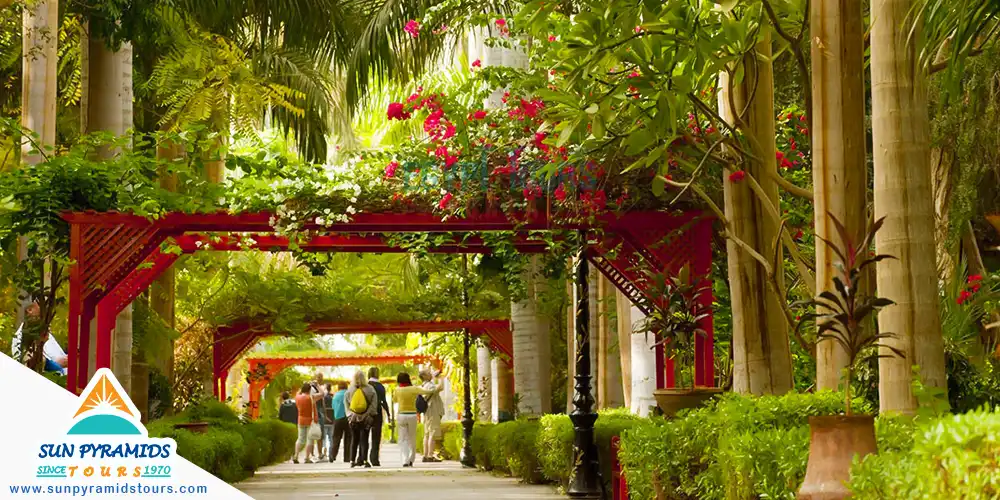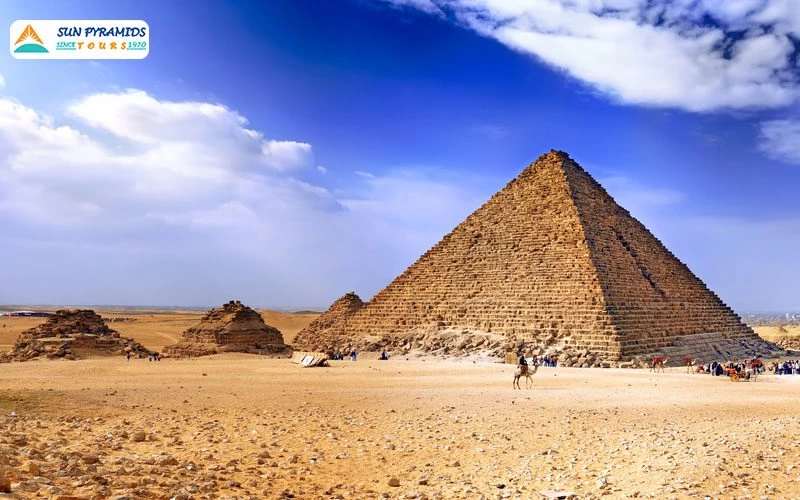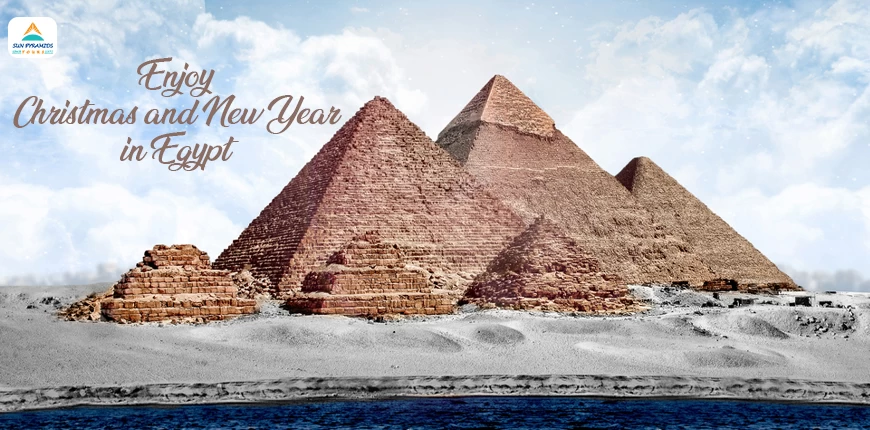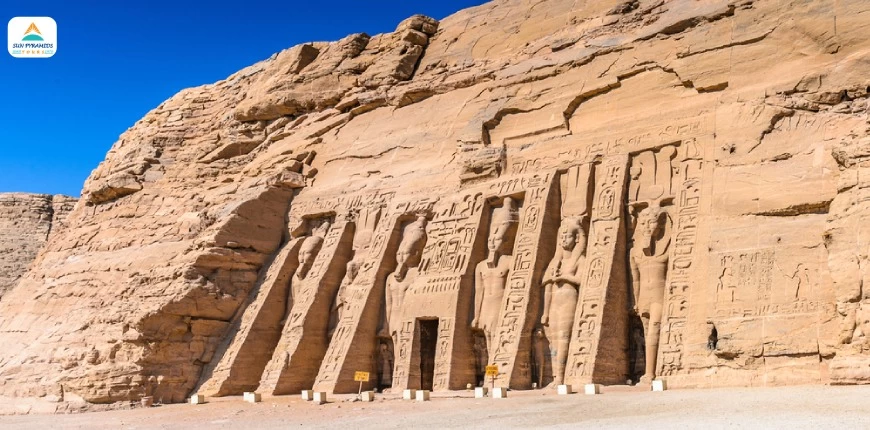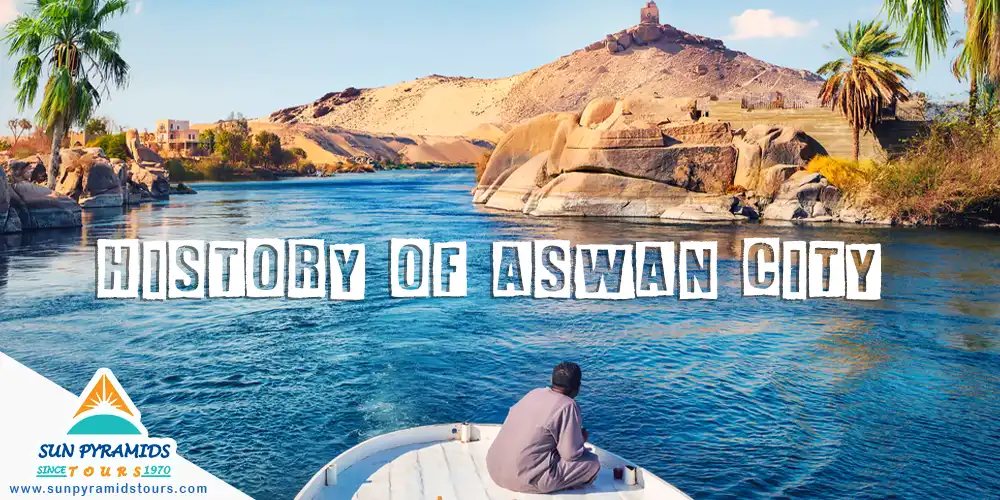
The History of Aswan City
Tags: Egypt Cities
Discover the enchanting city of Aswan, known for its rich history, unique geography, and stunning landmarks. Once the ancient city of Swenett, Aswan played a vital role in Egypt's military, trade, and culture. Explore its legacy through captivating stories of ancient quarries, religious monuments, and breathtaking scenery.
History of Aswan

-
Ancient City of Swenett
Aswan, originally known as Swenett, served as the southern frontier city of Ancient Egypt, marking the country's beginning at the Nile River. The name Swenett is believed to be derived from an Egyptian goddess associated with childbirth, later identified by the Greeks as Eileithyia and by the Romans as Lucina. Swenett also represented the Egyptian symbol for trade or market, reflecting the city's significance as a key commercial hub. The city stood on the east bank of the Nile, north of the first cataract, providing a natural border and a vital point of orientation for the Egyptians. Aswan's role as both a commercial and spiritual gateway made it an essential part of Egypt's ancient civilization.
-
Geographical Significance
Located at the southernmost tip of Egypt, Aswan held significant geographical importance as the gateway to Africa. The ancient Egyptians viewed Swenett, later, as the starting point of Egypt, where the life-giving waters of the Nile originated. Positioned on a peninsula along the east bank of the Nile, just below the first cataract, the city allowed seamless navigation to the Nile Delta. Aswan's strategic location made it a vital trade hub and the opening to Egypt’s southern territories. Where is Aswan Located is key to understanding its historical and economic influence on the region.
-
Stone Quarries of Ancient Egypt
The History of Aswan is deeply connected to its stone quarries, which were renowned in ancient Egypt for producing the valuable granitic rock known as syenite. These quarries supplied the material for colossal statues, obelisks, and monolithic shrines found throughout Egypt, including the iconic pyramids. The legacy of these quarrymen, who worked over 3,000 years ago, remains visible in the native rock today. These quarries stretched across both banks of the Nile, with a road approximately 6.5 km long carved into the landscape, connecting Syene to Philae.
-
Military and Trade Importance
The History of Aswan highlights Swenett's dual role as a military station and trade center throughout Ancient Egypt's dynasties. Swenett was a vital garrison town, where tolls and customs were levied on all boats traveling along the Nile. Its strategic location made it a military stronghold and an economic hub. Around 330 AD, a bishop from Alexandria was stationed here, marking the town's significance as a religious center, eventually becoming the Coptic Diocese of Syene.
-
Mentions in Ancient Writing
Mentions in Ancient Writing describe Aswan as a city frequently referenced by notable figures such as Herodotus, Strabo, and Pliny the Elder. It also appears in ancient geographical works like the Antonine Itinerary. The city is even believed to be mentioned in the biblical texts of Ezekiel and Isaiah, further emphasizing its historical and cultural significance. Aswan's prominent place in these texts underscores its role in ancient literature and religious contexts.
Aswan's Geography: Where Shadows Disappear

-
Aswan’s Unique Latitude
Aswan’s Unique Latitude was a subject of fascination for ancient geographers and mathematicians due to its location at 24° 5′ 23″. They observed that during the summer solstice, a vertically positioned staff cast virtually no shadow, and the sun's disc was reflected directly in a well. This phenomenon significantly contributed to the Greek polymath Eratosthenes' groundbreaking calculation of the Earth's circumference over 2,200 years ago. Such observations placed Aswan at the heart of ancient scientific discoveries, linking the city to broader inquiries about the Earth's dimensions.
-
Aswan Climate
Aswan experiences a hot desert climate (Köppen BWh) similar to the rest of Egypt. Known for its blazing summers, Aswan and Luxor are among the hottest cities in Egypt, with temperatures often exceeding 40°C (104°F) during summer months. Winters are mild but can have cool nights. With an annual average rainfall of less than 1 mm, Aswan ranks as one of the driest cities in the world, making rainfall an infrequent event. The rare occurrences of rain can cause flash floods, as seen in November 2021, when heavy precipitation and hailstorms led to unexpected flooding. The relative humidity is exceptionally low, averaging just 26%, further emphasizing Aswan's desert conditions. Aswan also enjoys almost 4,000 hours of annual sunshine, earning it recognition as one of the sunniest places on Earth.
|
Month |
Avg High °C |
Avg Low °C |
Rainfall (mm) |
|
January |
23°C |
8°C |
0 mm |
|
February |
26°C |
11°C |
0 mm |
|
March |
31°C |
16°C |
0 mm |
|
April |
37°C |
21°C |
0 mm |
|
May |
41°C |
26°C |
0 mm |
|
June |
42°C |
28°C |
0 mm |
|
July |
42°C |
28°C |
0 mm |
|
August |
42°C |
28°C |
0 mm |
|
September |
40°C |
25°C |
0 mm |
|
October |
36°C |
21°C |
0 mm |
|
November |
29°C |
15°C |
0 mm |
|
December |
24°C |
9°C |
0 mm |
-
Aswan Transport
Information About Aswan's transport reveals its strong connectivity. The Cape to Cairo Road links Aswan to major cities like Luxor, Cairo, and Abu Simbel. The Aswan-Berenice highway provides access to Red Sea ports.
The Cape to Cairo Railway connects Aswan to Cairo and Wadi Halfa, although it remains incomplete to the south. Key infrastructures include the Port of Aswan, the largest river port, and Aswan International Airport, offering domestic and limited international flights.
Aswan Famous Landmarks
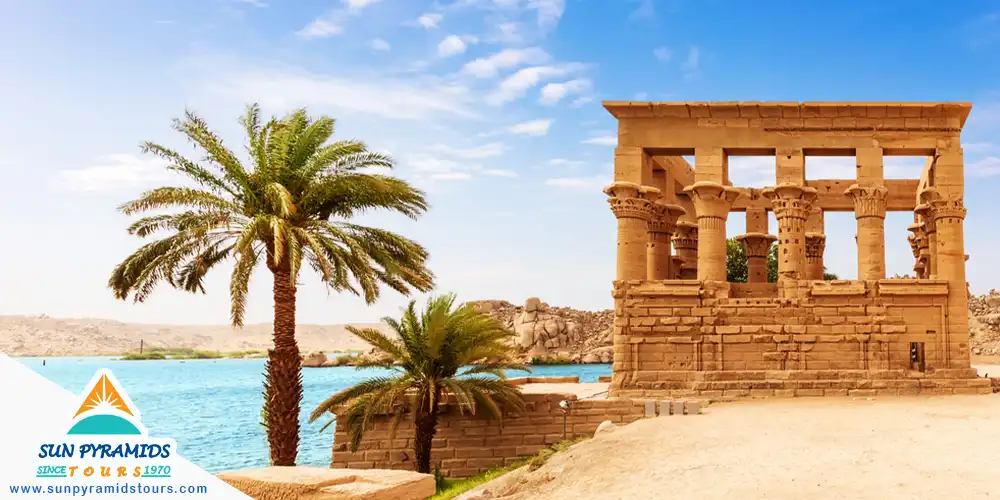
Abu Simbel Temple
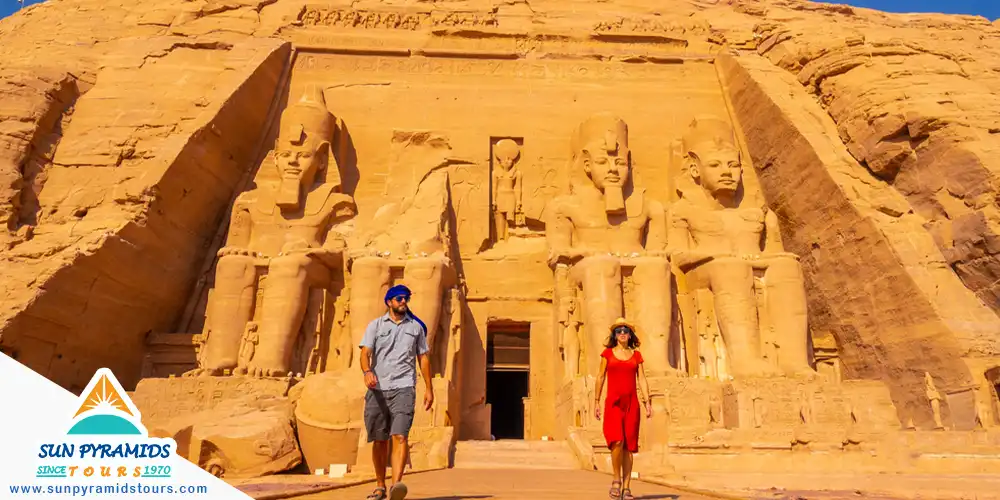
Abu Simbel Temple is one of Egypt's most iconic landmarks, built by Pharaoh Ramses II in the 13th century BC. This massive rock-cut temple features colossal statues of Ramses II and his queen Nefertari, showcasing the grandeur of ancient Egyptian art and architecture. The temple's relocation in the 1960s to avoid flooding from the Aswan High Dam is a testament to modern engineering prowess. As one of The Most Famous Archaeological Sites in Aswan, it remains a symbol of Egypt's ancient glory. Its solar alignment during specific times of the year reveals the sophistication of its design, continuing to inspire awe and making it a must-visit destination.
Edfu Temple
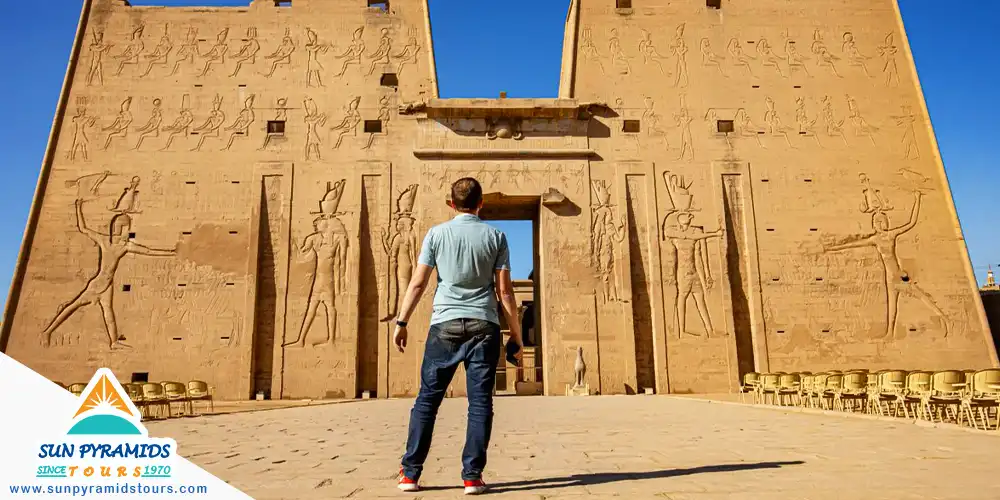
Edfu Temple, dedicated to the falcon god Horus, is one of Egypt’s best-preserved temples, showcasing the magnificence of the Ptolemaic era. Built on the sacred land where the ancient Egyptians believed the epic battle between Horus and Set took place, this temple stands as a powerful symbol of good triumphing over evil. The grandeur of its architecture, stunning reliefs, and detailed inscriptions make it an essential stop on any exploration of The History of Aswan City. As one of the last major temples constructed in ancient Egypt, it represents the enduring brilliance and honor of Egyptian civilization.
Kom Ombo Temple
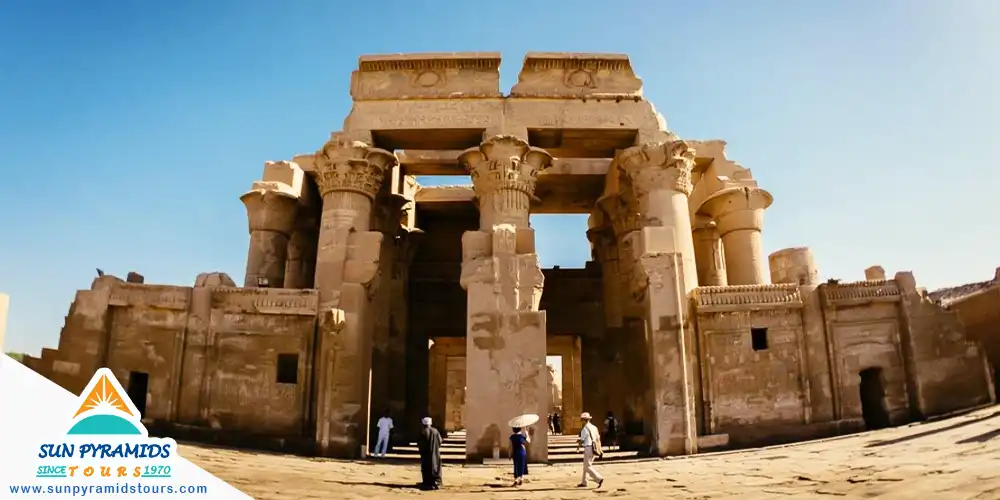
Kom Ombo Temple is one of Aswan's most distinctive temples, and possibly Egypt's most unique. Its name means "The Hill of Gold," reflecting its significance. Constructed during the Greco-Roman Period, from 205 to 180 BC, under King Ptolemy V, the temple is located 45 km north of Aswan on the eastern bank of the Nile. What sets Kom Ombo Temple apart is its double design, making it one of a kind. The temple is divided into two identical sections dedicated to two gods: Sobek, the crocodile deity of fertility, in the southern half, and Horus the Elder (Haroeris), the falcon deity, in the northern half. This unique structure symbolizes the Ptolemies' control and sovereignty over Egypt. Visitors can marvel at the intricate carvings and even explore displays showcasing ancient medical instruments, adding to the rich historical experience.
For a full Kom Ombo Temple itinerary with Sun Pyramids Tours, explore this one-of-a-kind experience with us!
Philae Temple
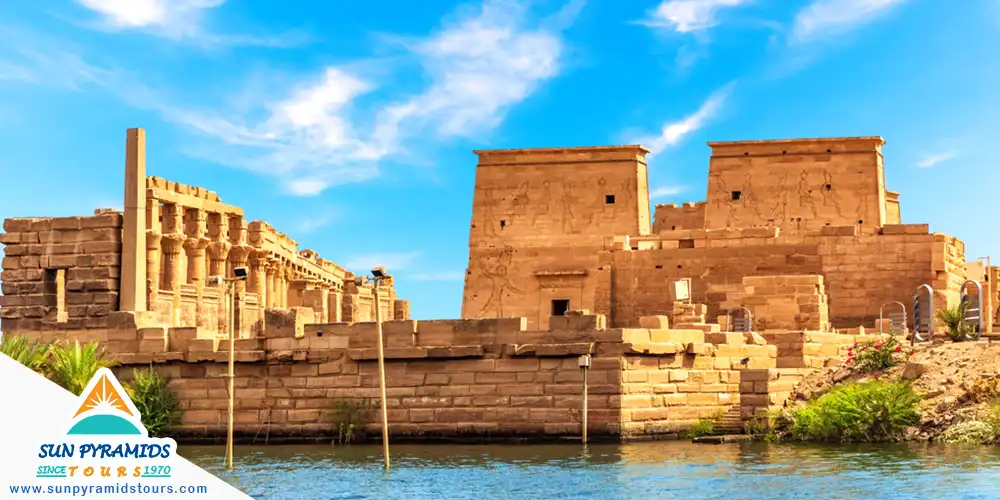
Philae Temple stands as one of Egypt's most captivating monuments, known for its enchanting beauty and historical significance. Built between 380 and 362 BC by King Ptolemy II and other rulers of the Ptolemaic era, it was dedicated to the goddess Isis, who symbolized motherhood, healing, and birth. Located on a rocky island that once served as a center of trade in the Nile River, south of Aswan, the temple has a rich history. In the 1960s, it was moved to Agilkia Island as part of a UNESCO-led rescue mission, protecting it from flooding due to the construction of the Aswan High Dam. Today, Philae Temple continues to mesmerize visitors, especially during the Sound and Light Show, which brings its stories to life in a spectacular display.
For a detailed Philae Temple itinerary with Sun Pyramids Tours, immerse yourself in this extraordinary journey with us!
The Aswan High Dam
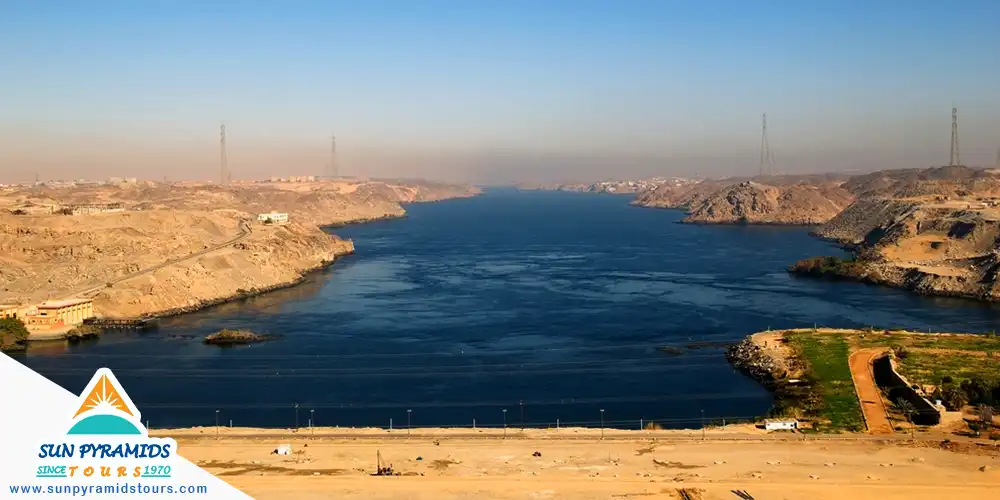
The Aswan High Dam is a monumental achievement, marking Egypt's leap into the industrial age. Completed in 1970, this engineering marvel tamed the Nile, protecting Egypt from devastating floods and providing water and electricity to millions. Stretching over 3.8 kilometers, it created Lake Nasser, one of the world's largest artificial lakes, transforming Egypt's agriculture and economy. The dam became a symbol of Egypt's 1952 revolution and ushered in a new era of progress and prosperity for the nation.
Experience The Aswan High Dam tour with Sun Pyramids Tours and witness this modern marvel firsthand.
The Unfinished Obelisk
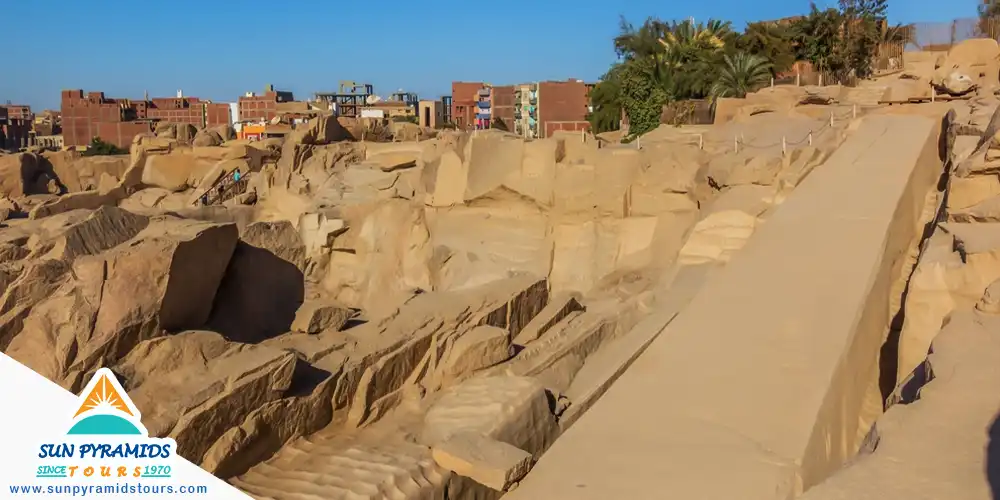
One of the marvelous monoliths of Aswan is the majestic Unfinished Obelisk, which serves as living proof of the unmatched intelligence and skill of ancient Egypt, revealing their desire to create monumental tales from stone. This massive obelisk, had it been completed, would have been the largest ever constructed. Unfortunately, a significant crack in the stone led to its abandonment. The site offers a unique opportunity to understand how massive structures were crafted during Egypt’s New Kingdom, particularly under the reign of Hatshepsut. The Unfinished Obelisk provides invaluable insights into the ancient Egyptian construction process and their stone-working techniques.
The Nubian Museum
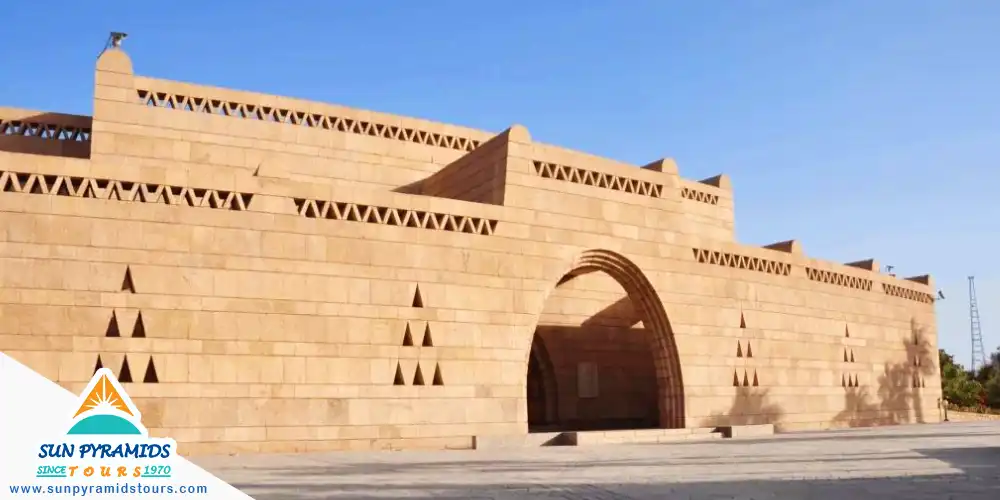
In the city of Aswan lies the majestic Nubian Museum, built to honor Nubian history and culture. Designed by Egyptian architect Mahmoud Al-Hakim, the museum was constructed for $22 million, and sponsored by UNESCO. It houses thousands of artifacts collected during the Nubian Rescue mission after the construction of the Aswan High Dam in the 1960s, which raised the water levels of Lake Nasser, putting many ancient Nubian monuments at risk. The museum offers an in-depth exploration of Nubia’s ancient civilizations through exhibits that include statues, jewelry, pottery, and other artifacts, making it a key cultural attraction in the region. Discover this incredible cultural heritage on The Nubian Museum visit with Sun Pyramids Tours, where you can immerse yourself in Nubia's rich and fascinating history.
Kitchener’s Island (Botanical Gardens)
Kitchener’s Island, home to the Aswan Botanical Gardens, is a lush oasis in the Nile. This peaceful island, once owned by Lord Kitchener, features a diverse collection of tropical plants, palm trees, and exotic flowers from around the world, offering visitors a tranquil escape amid Aswan’s natural beauty. The island, less than a kilometer long and half a kilometer wide, is designed with 27 beautifully arranged squares, making it feel like a natural chessboard. With three entrances, it invites both locals and tourists to explore its vibrant greenery. A Kitchener’s Island visit with Sun Pyramids Tours provides the perfect opportunity to relax and enjoy this serene botanical haven.
Kalabsha Temple
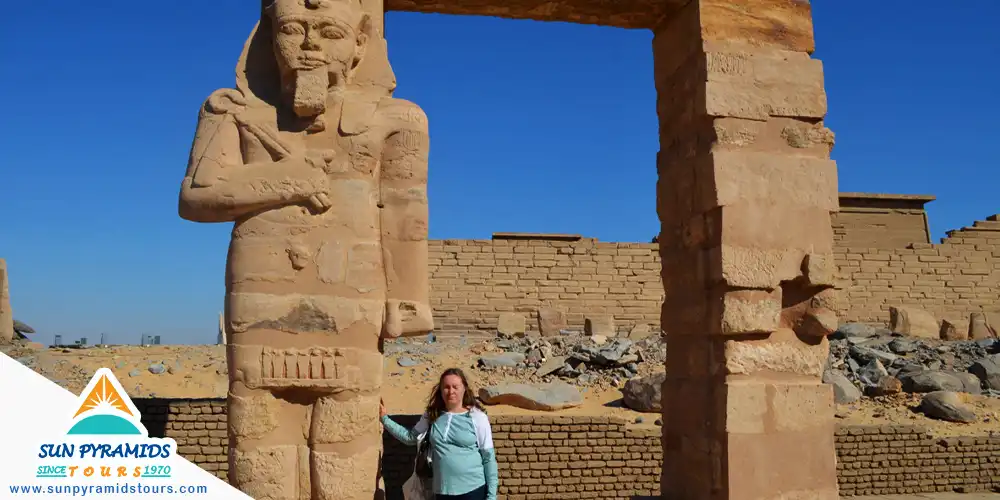
Kalabsha Temple, originally located near the Aswan High Dam, was relocated to New Kalabsha Island to save it from flooding caused by the construction of the dam. This Greco-Roman temple, dedicated to the Nubian sun god Mandulis, greets visitors with a striking stone causeway leading to its grand first pylon. Inside, the temple reveals a colonnaded court and an eight-columned hypostyle hall, showcasing impressive hieroglyphs and detailed reliefs. These carvings offer insight into the influence of Greek pharaohs and ancient Egyptian deities. A Kalabsha Temple visit with Sun Pyramids Tours provides a captivating journey into the blend of Nubian and Roman religious heritage.
Discover Aswan in Every Detail with Sun Pyramids Tours' Expert Itineraries.
End your journey through Aswan with a deeper connection to Egypt's rich past by exploring every hidden gem the city has to offer. With Sun Pyramids Tours, our carefully crafted itineraries cover every inch of Aswan, from the majestic temples to the tranquil islands and beyond. Let us guide you through the ancient wonders, stunning landscapes, and timeless stories that make Aswan a must-visit destination. Book your unforgettable adventure today and discover the magic of Aswan with Sun Pyramids Tours!
Why do I book with Sun Pyramids Tours?
1) Expertise and Experience: Sun Pyramids Tours has a wealth of 53 years of experience in the travel and tourism industry.
2) Customized Itineraries: Sun Pyramids Tours offers tailored itineraries to suit your preferences. Whether you're interested in historical sites, cultural immersion, or adventure activities, we can design a tour that matches your interests.
3) Local Connections and Insider Access: Sun Pyramids Tours can provide you with unique opportunities and insider access to attractions and experiences that may not be easily accessible to independent travelers.
4) Hassle-Free Planning: Sun Pyramids Tours can take the stress out of planning your trip. We handle all the logistics, including accommodations, transportation, and guided tours, at competitive prices… Relax and enjoy your vacation without worrying about the details.
5) Customer Satisfaction: Sun Pyramids Tours prides itself on providing excellent customer service and ensuring customer satisfaction. They strive to meet and exceed your expectations, making your trip enjoyable and memorable. Add trip advisor reviews, Facebook page reviews, etc.
6) Safety and Security: Sun Pyramids Tours prioritizes the safety and security of their guests. We work with trusted partners, adhere to safety guidelines, and provide support throughout your journey to ensure a safe and comfortable travel experience.

